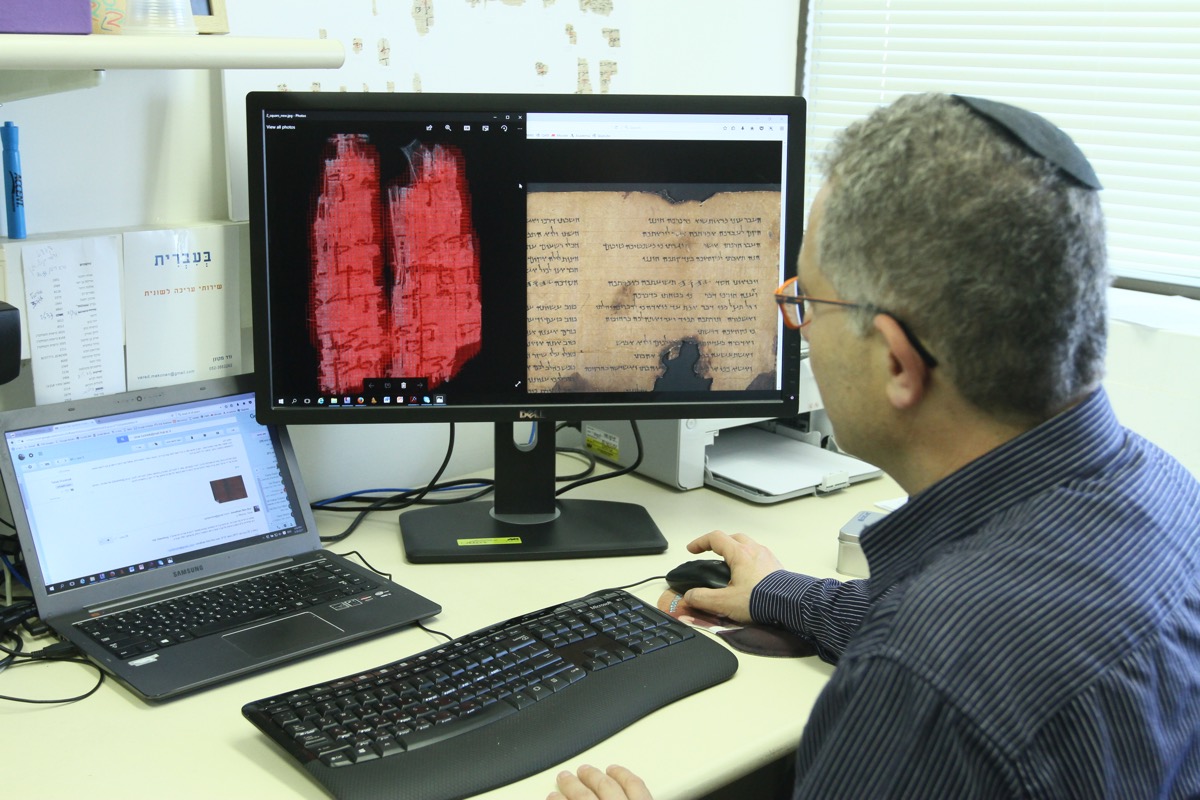Dead Sea Scroll Remains a Puzzle After Scientists Crack its Code

Scholars have deciphered a Dead Sea Scroll written in a Hebrew code, finding that it contains part of a 364-day calendar of holy days.
The calendar notes the day of Sabbaths, the start of seasons and the days of festivals and feasts. The scribe, who went to the trouble of writing the scroll in code, forgot to include the Day of Atonement (known as Yom Kippur) on the calendar; but another scribe, who apparently understood the code, inserted that day onto the calendar.
The scroll, made out of leather, also contains a short note explaining that the Offerings of Wood festival should be held over six days, with two trees being offered to god on each of those days. [See Images of the Dead Sea Scrolls]
Scholars still aren't sure why this scroll, along with a few other Dead Sea Scrolls, were written in code.
The Dead Sea Scrolls were found in 12 caves near the site of Qumran in the West Bank. They consist of thousands of fragments from over 900 manuscripts. Many scholars believe that a sect called the Essenes who lived at Qumran wrote many of the scrolls. The scrolls contain numerous texts from the Hebrew Bible as well as calendars, astronomical observations and rules for how community members should live, among other types of texts.
Most of the fragments came from 11 caves found between 1947 and 1956. Archaeologists found an additional cavein 2017, though it had been robbed in the mid-20th century and only one blank scroll was found inside. The newly deciphered scroll is from what archaeologists call "cave four," which was discovered by the Bedouin people in 1952. Until now, this Dead Sea Scroll was one of only a few scrolls that had not been fully deciphered and described in the scientific literature, researchers said.
Jigsaw puzzle
The surviving portion of the calendar is not only written in code but is now also in 62 tiny pieces. The decipherment "presented outstanding difficulties and required extraordinary efforts, much like assembling a jigsaw puzzle," wrote postdoctoral fellow Eshbal Ratzon and professor Jonathan Ben-Dov, both at the University of Haifa, in a paper recently published in the Journal of Biblical Literature.
Sign up for the Live Science daily newsletter now
Get the world’s most fascinating discoveries delivered straight to your inbox.

"The fragments vary in size from 3.9 cm × 2.8 cm [1.5 by 1.1 inches] for the largest fragment to many small fragments not larger than 1.5 cm × 1.5 cm [0.6 by 0.6 inches]," Ratzon and Ben-Dov wrote in the journal article.
The code that is used "is a simple replacement code, with each letter represented by a designated sign," Ratzon and Ben-Dov wrote. "Some of these signs correspond to paleo-Hebrew or Greek letters, while others seem arbitrary." Paleo-Hebrew is a form of Hebrew writing that was no longer widely used at the time the Dead Sea Scrolls were written around 2,000 years ago.
Why was it coded?
Just a few Dead Sea Scrolls were encrypted, and most of those were written using the same code used in the newly deciphered scroll.

Strangely, this calendar, along with the other coded Dead Sea Scrolls, are texts that were well known in the Qumran community — such as "The Rule of the Congregation" and "Phases of the Moon" — if not elsewhere in Israel, and don't seem to include any secrets or hidden wisdom, researchers say.
"The general aim of encryption in Qumran is not entirely clear," Ratzon and Ben-Dov wrote. "It generally seems that encryption was a means of conveying prestige to the initiated but not a means of 100-percent security or preventing comprehension by other community members."
The scientists are studying this newly deciphered scroll and others to better understand why a few of the Dead Sea Scrolls were coded.
Original article on Live Science.

Owen Jarus is a regular contributor to Live Science who writes about archaeology and humans' past. He has also written for The Independent (UK), The Canadian Press (CP) and The Associated Press (AP), among others. Owen has a bachelor of arts degree from the University of Toronto and a journalism degree from Ryerson University.









